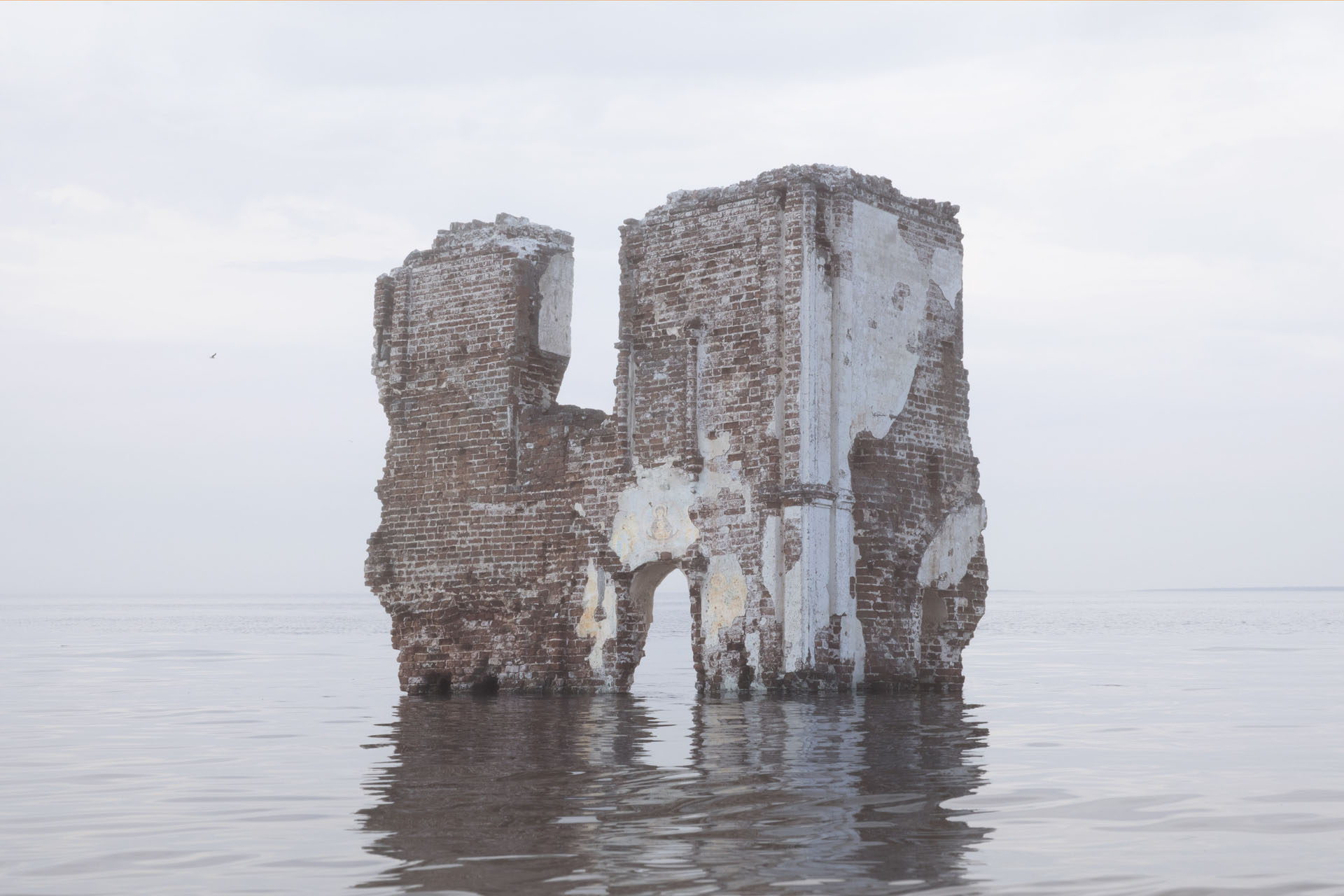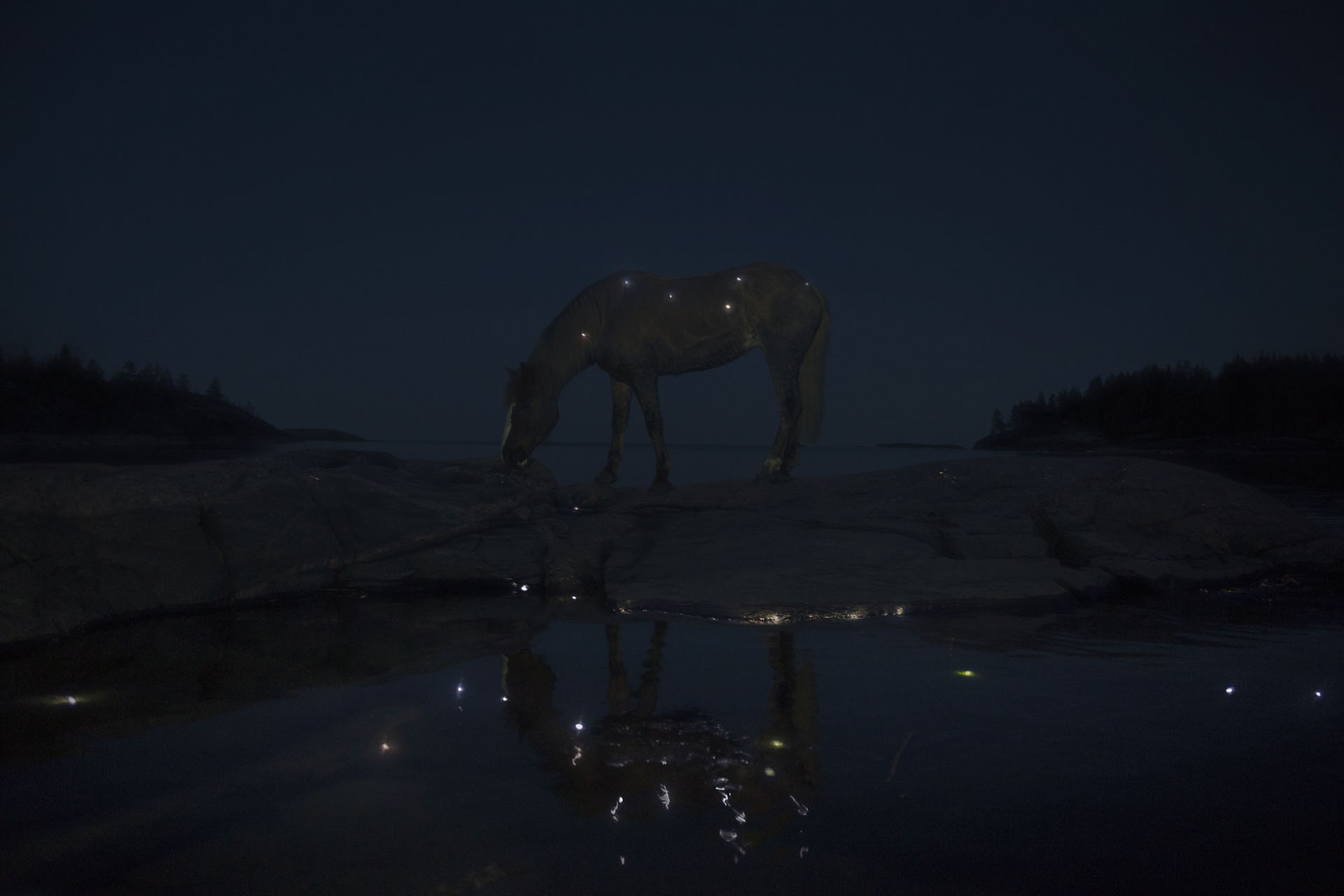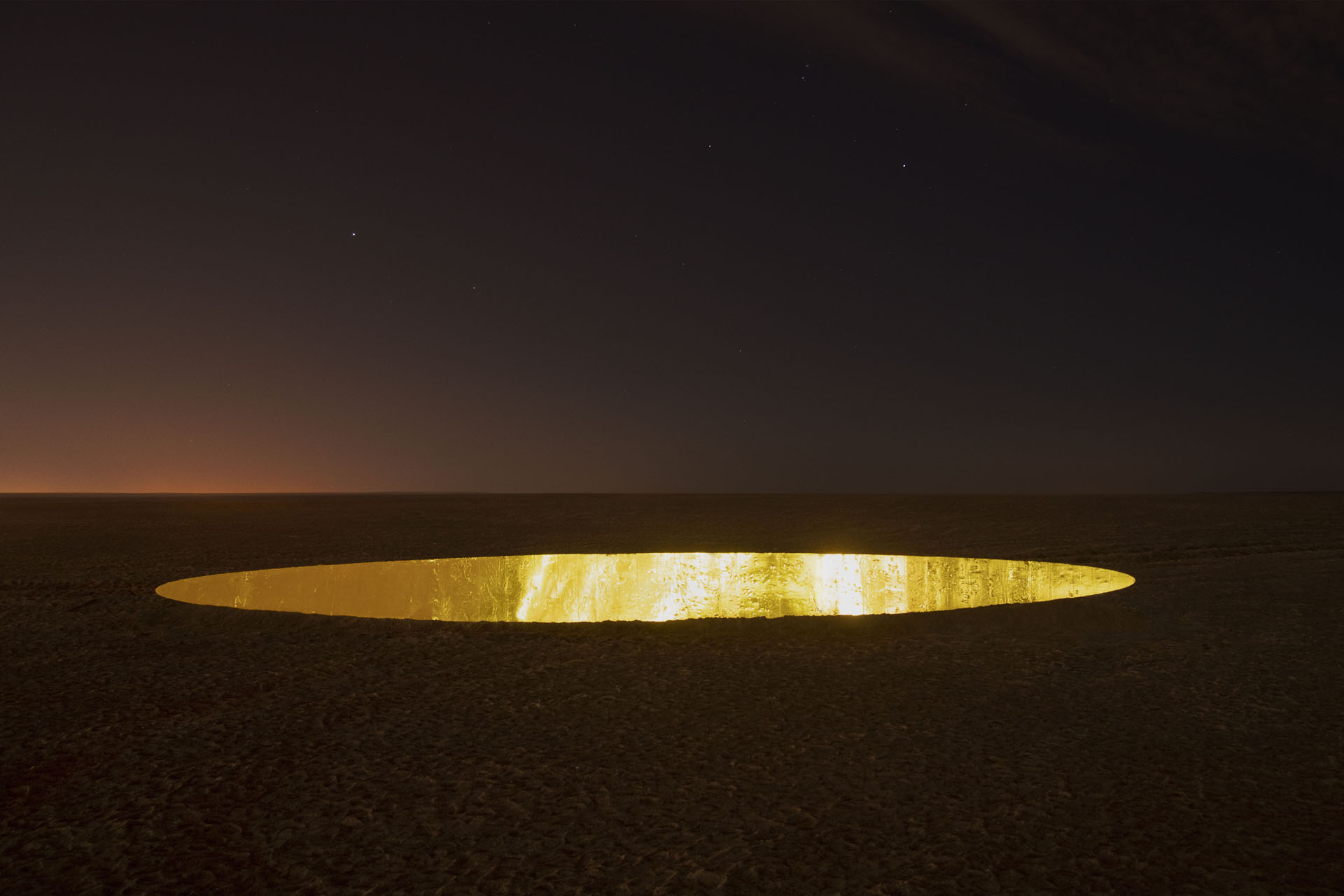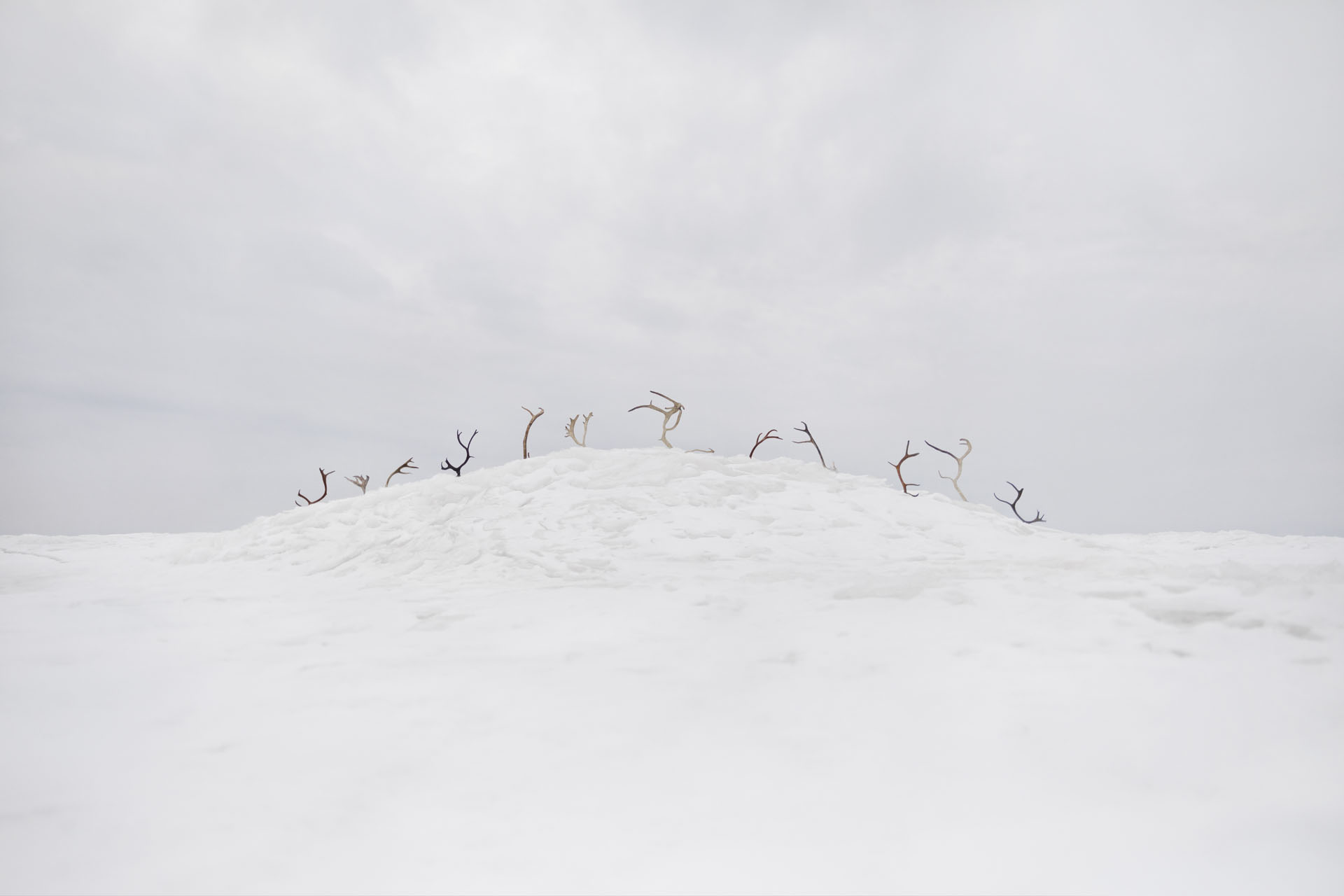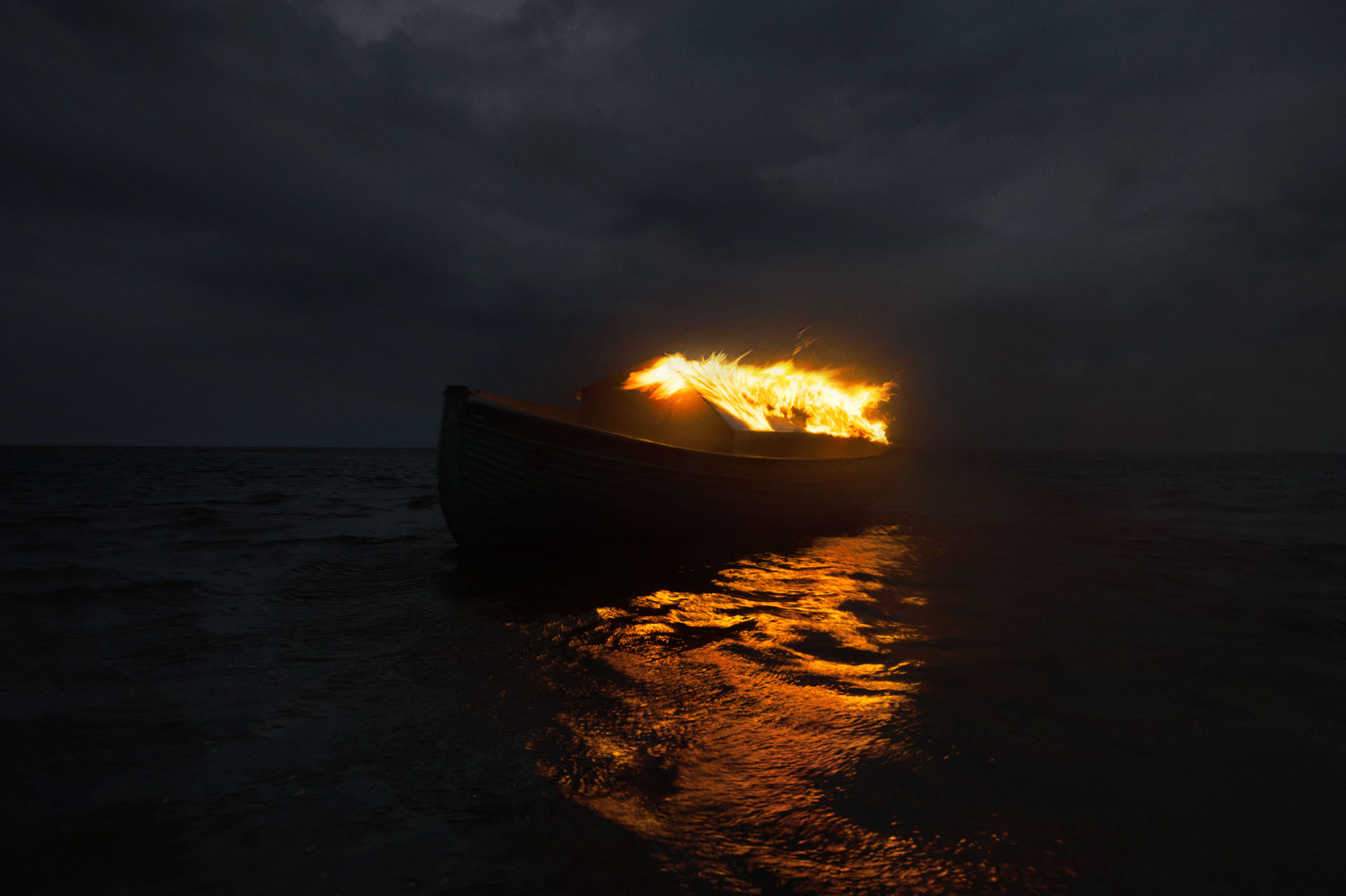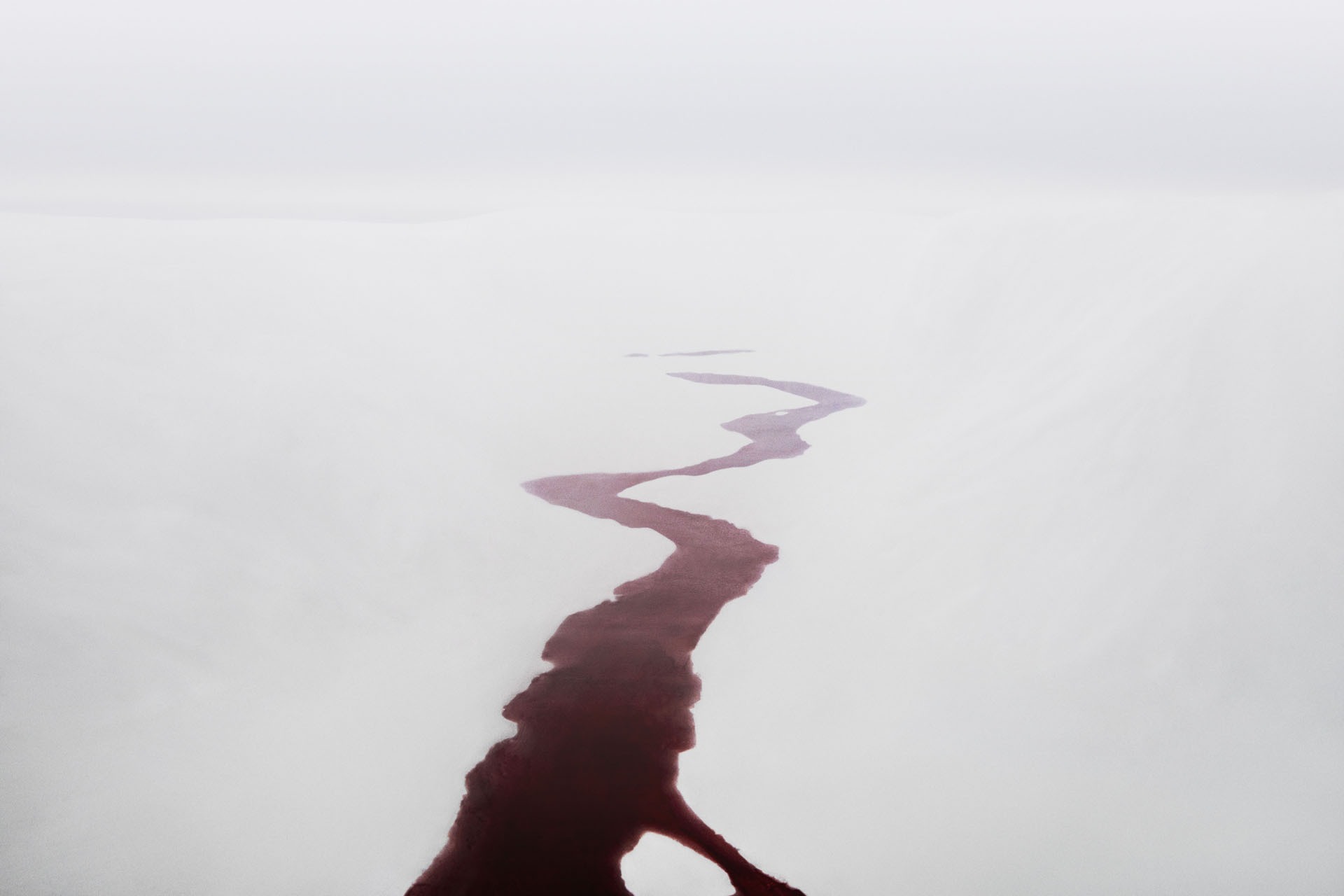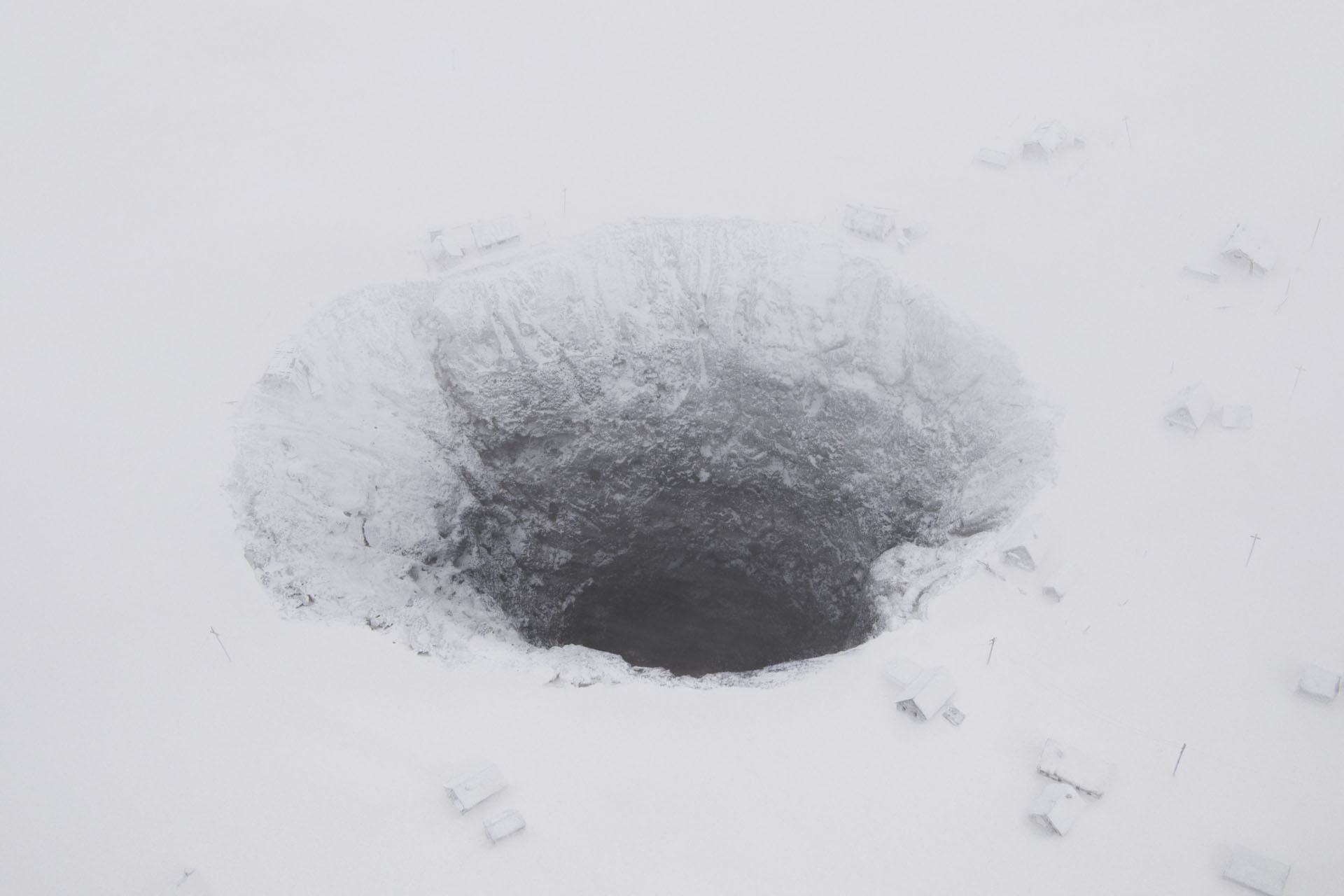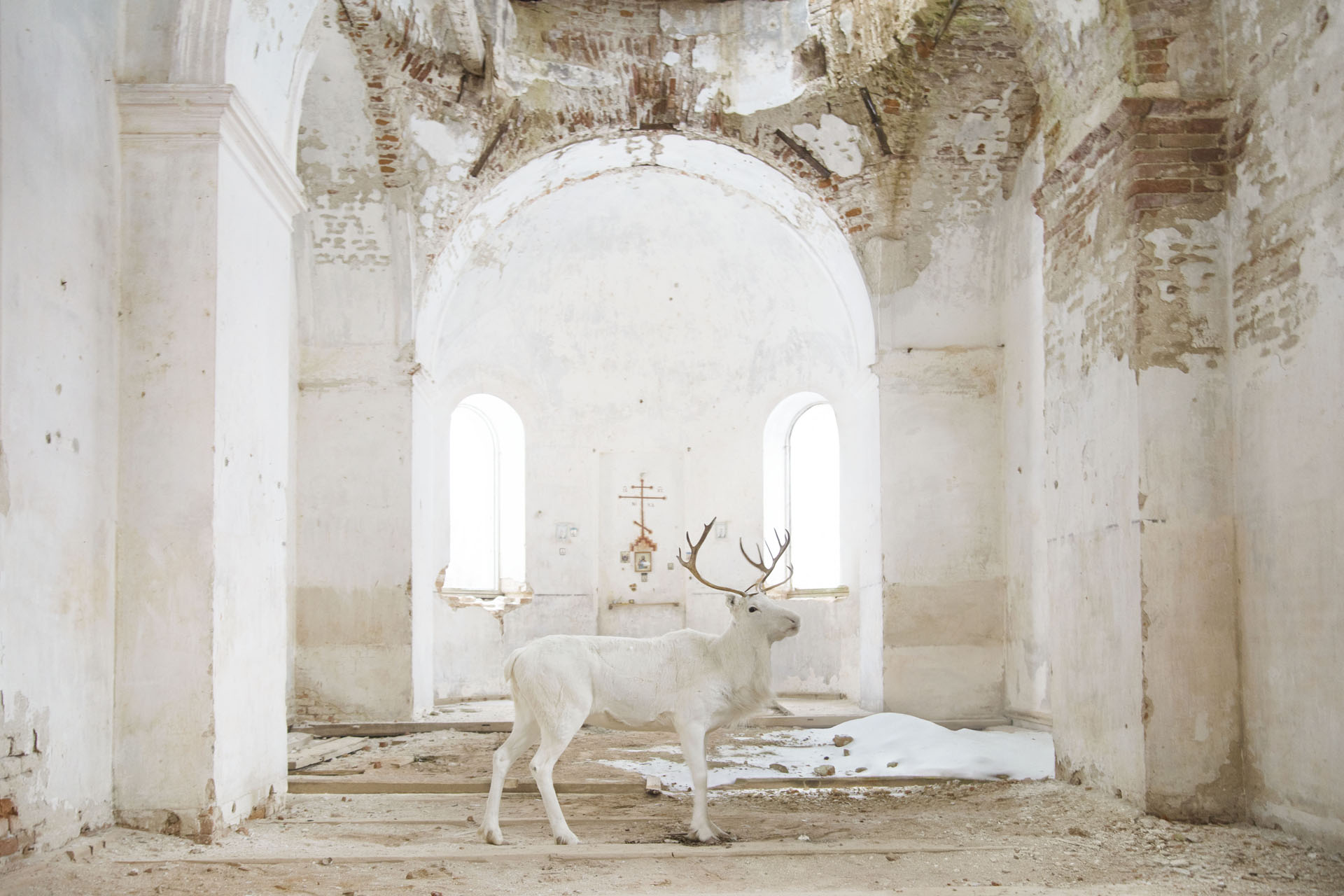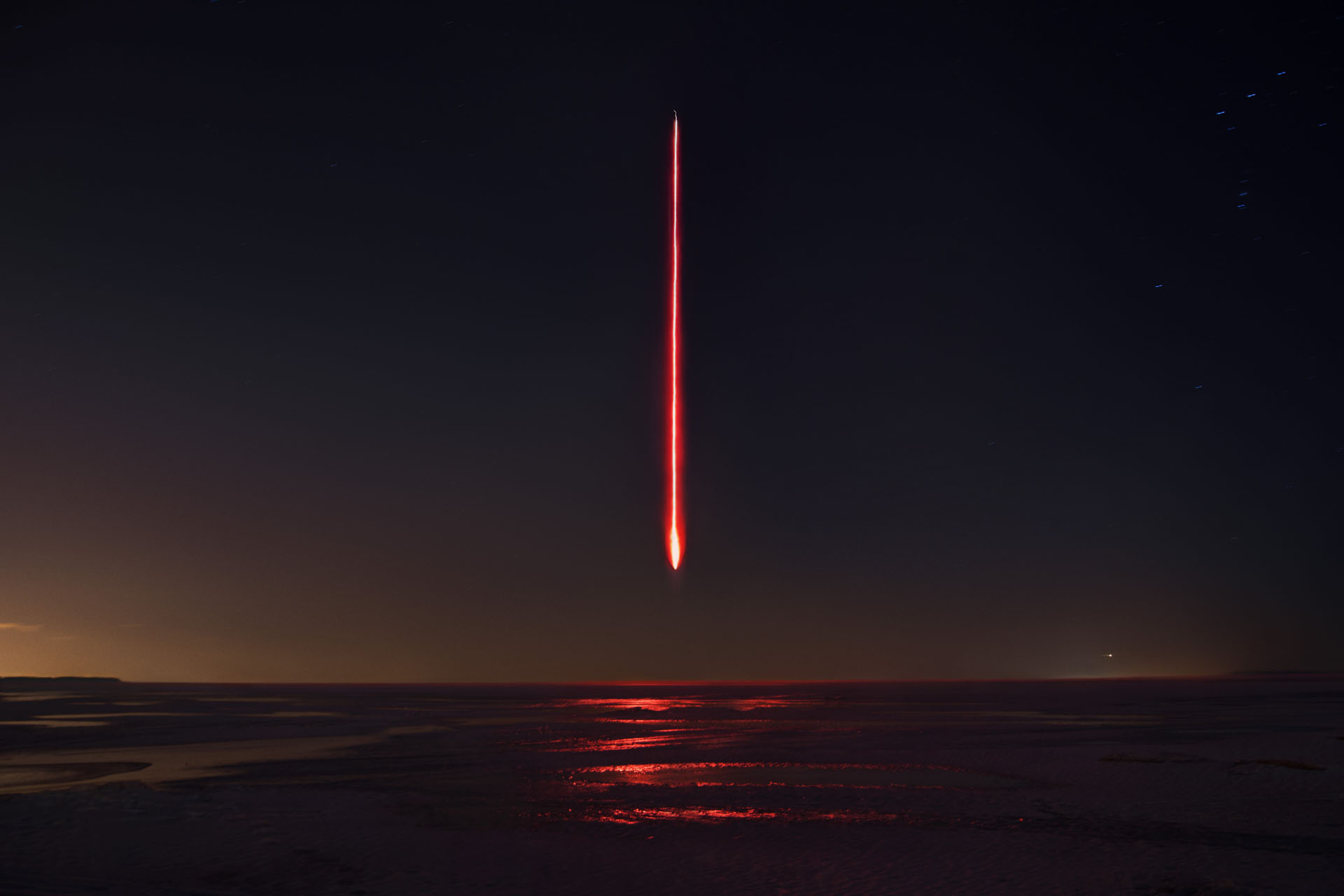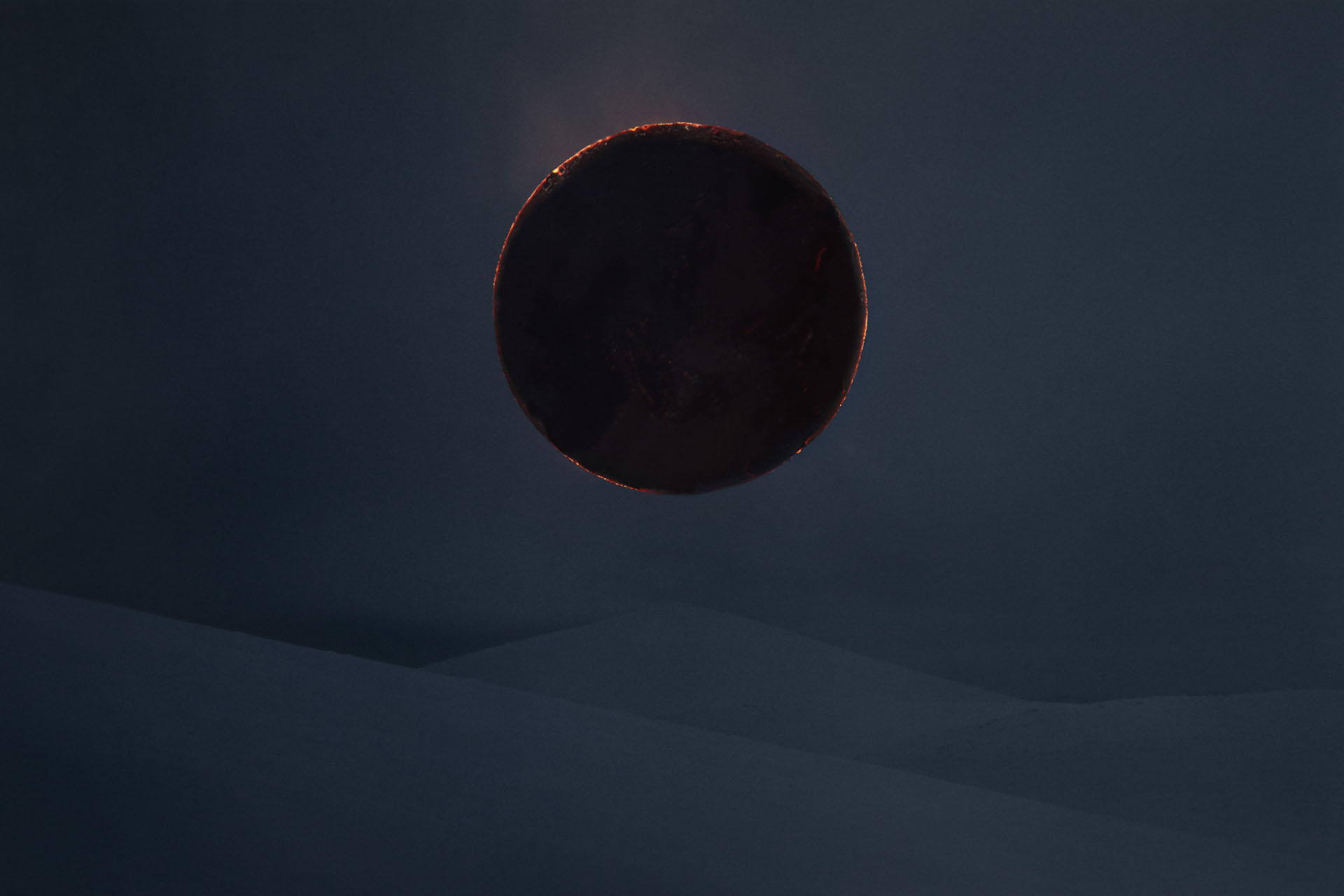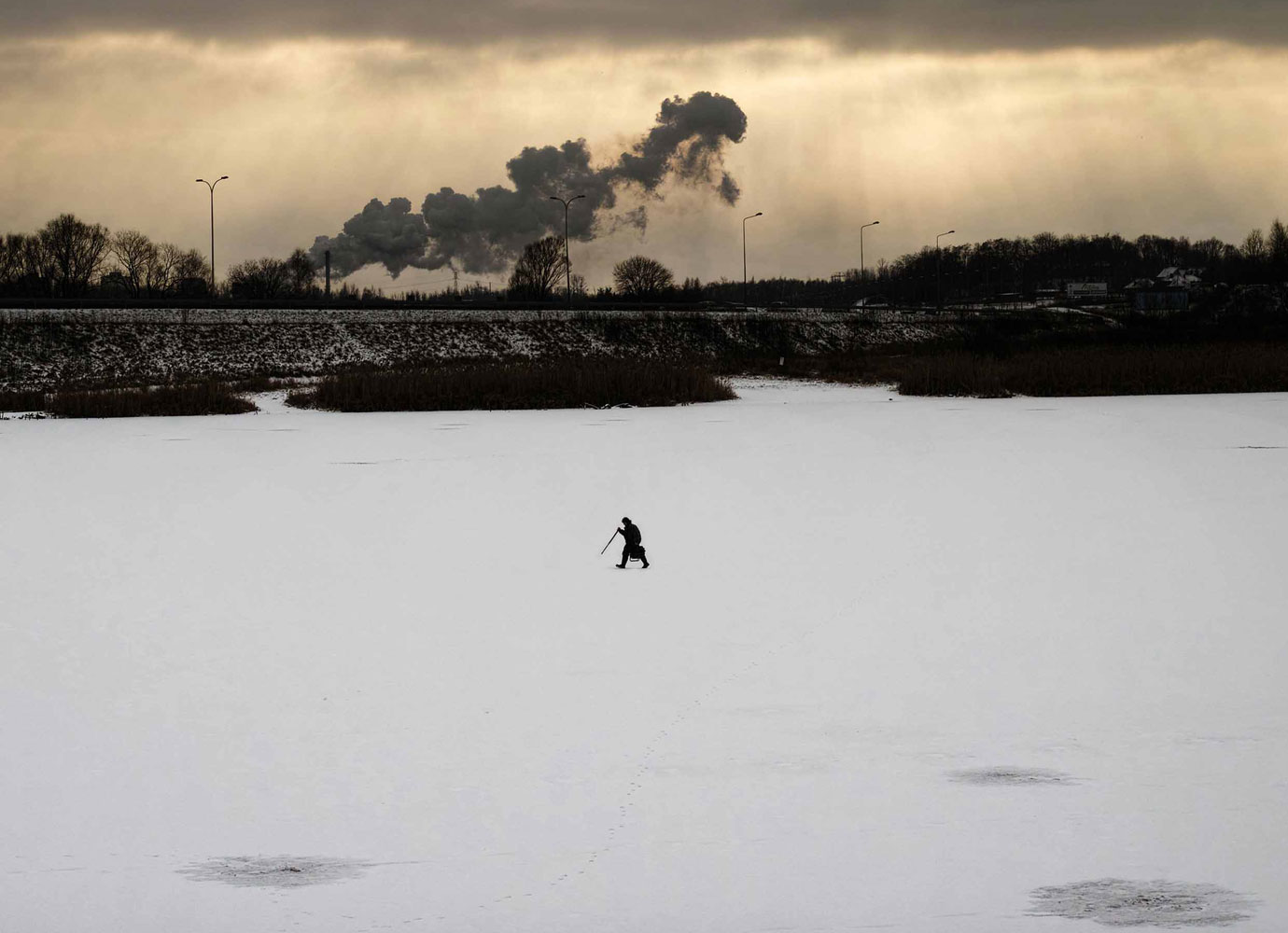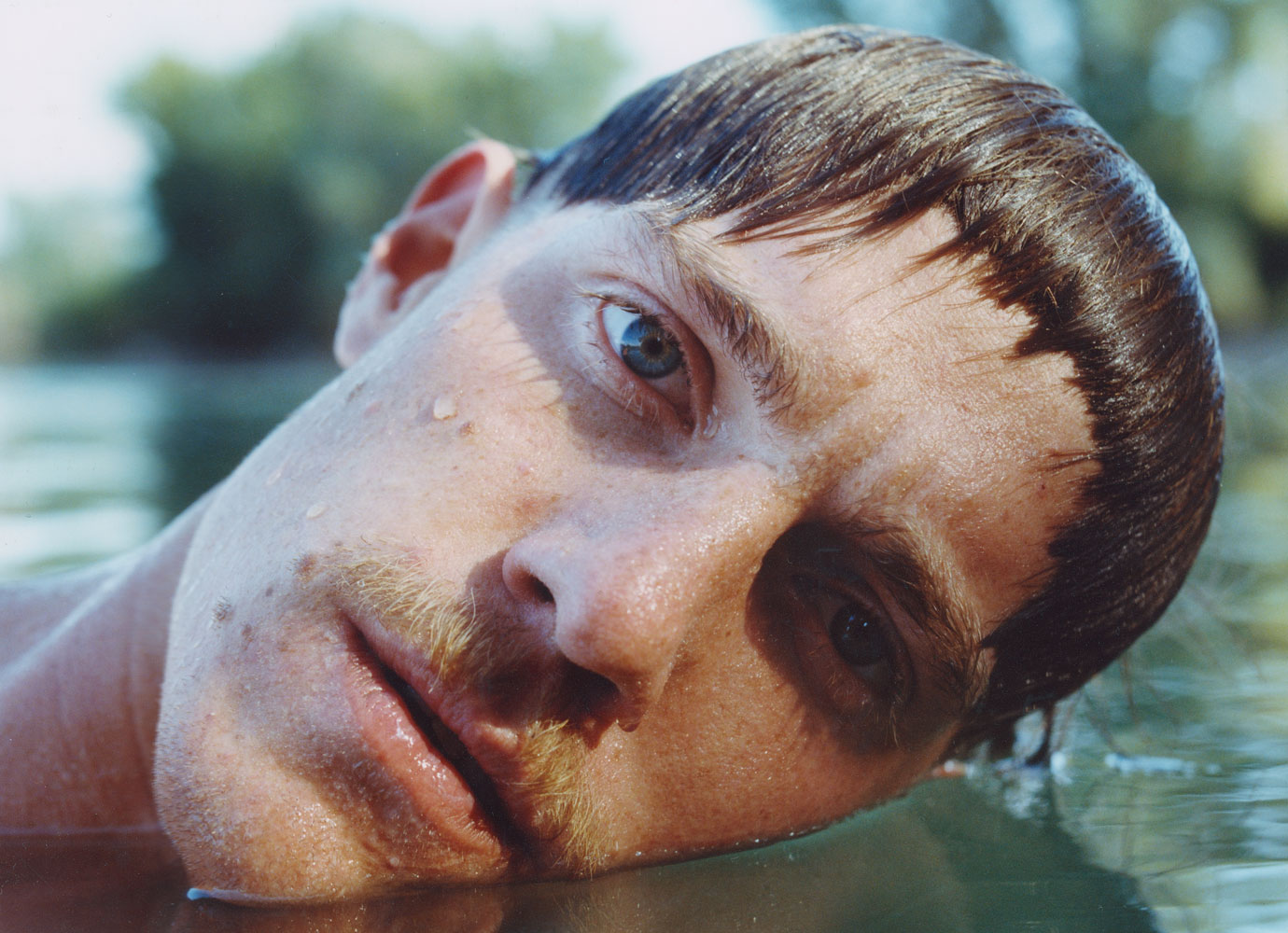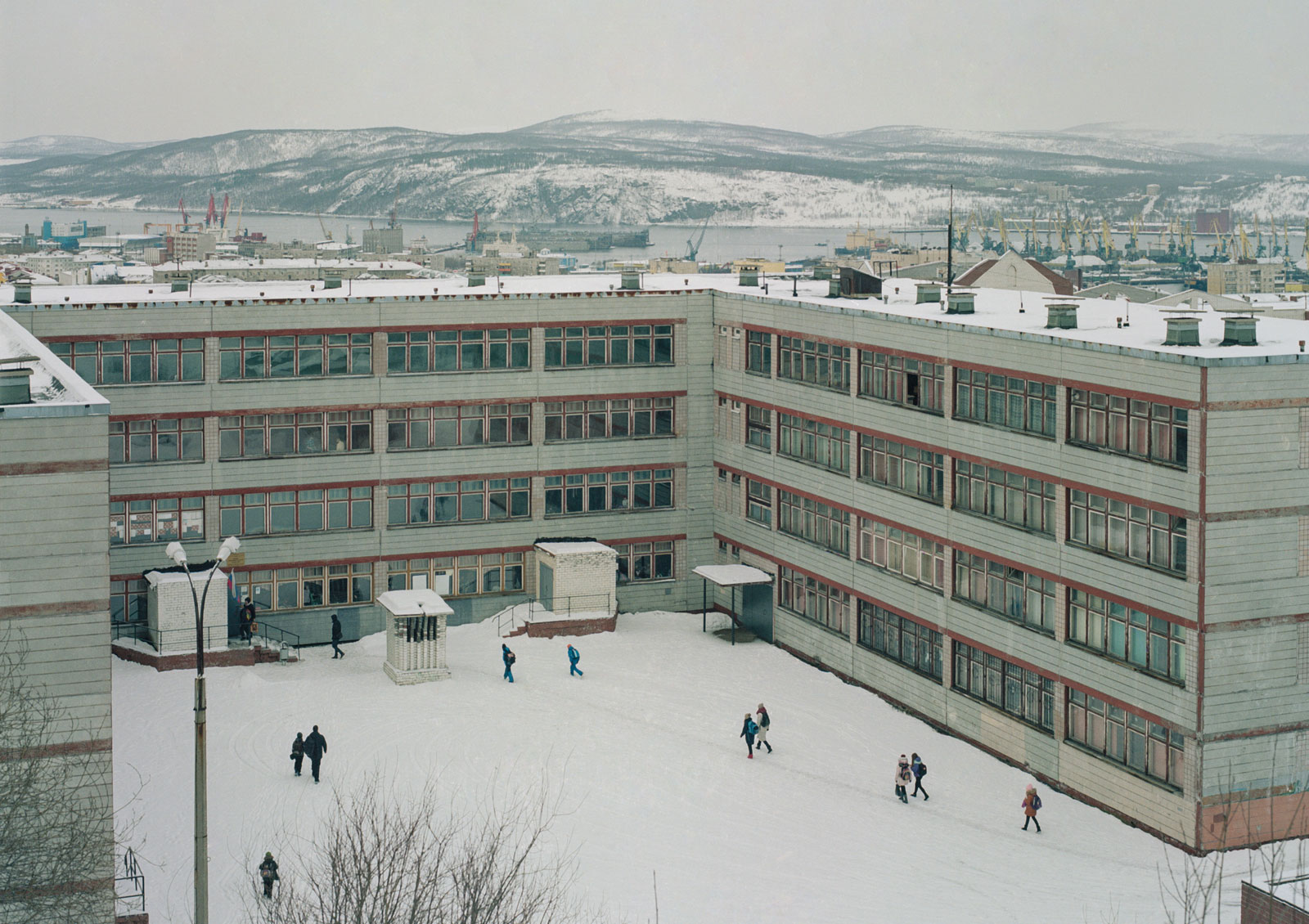Photographer Igor Elukov crafts floods, miracles and magic in the Russian North
Our biannual New East Photo Prize is back this year with 11 finalists. Below, get to know St Petersburg-based photographer Igor Elukov and his astonishing and ominous series Book of Miracles.
Even on otherwise clear days, the barren monotonous plains that blanket much of northern Russia distort any sense of perspective and scale. It is the kind of landscape that is too complex for the human eye to comprehend, let alone document on camera. The beguiling, mirage-like nature of the tundra has been a long-term inspiration for Igor Elukov, who grew up in the Arctic region of Arkhangelsk. Book of Miracles is a project of ambitious scale and elaborate production, involving no less than 40 people. Sets and installations were built and transported into the tundra, along with props and, remarkably, real livestock. Semi-documentary and semi-fictional, the photographs are mystical, spellbinding, Biblical even — drawing you to wonder about its making and, perhaps, more deeply about genesis and creation itself.
Book of Miracles follows on from Severe, Elukov’s major documentary project on the Russian North, produced between 2012 and 2016 and told through dramatic black and white analogue photos. In Book of Miracles, he condenses the landscape further, stripping it to just a few primal elements — water, wind, the snow and the moon — that govern life above the Arctic circle. Fire was a late addition to the project. Prior to making Book of Miracles, Elukov had been working as a director in the Kola Peninsula, where he and his team filmed metal smelters, descended into mines, and traversed toxic wastelands. One day, while working among the blast furnaces, the foam rubber on his camera caught aflame. “This was the missing piece of the alchemy,” he says. Once he returned to his home in St Petersburg, he busied himself developing plans for the project.
Several months were spent scouting locations. “There are four permanent staff on my production team. The main work was carried out with artist-performer Polina Timofeeva,” he explains. The striking image of cows surrounded by the incoming tide was captured off the Gulf of Finland. He had envisaged it as a flock of domestic and wild animals on a small patch of (not yet) flooded land with the sea raging around them. First, they had tried to find an island with the right conditions to bring the animals. They found a zoo in a town nearest to the bay, from which they borrowed the Jersey cow and calves. For a month, they waited for the perfect circumstances. “In the end it was more convenient to make the island ourselves than to look for the ideal water levels and light. It took two days to construct an island of the desired size and shape.”
On the day of the shoot, their car broke down. “The truck of animals had arrived at 7pm, giving us three hours to shoot. In the end, we only had 40 minutes to arrange the composition. Then something miraculous happened: the light changed, the wind died down, and we had a pastoral landscape in front of us.”
“It is more interesting for me to consider each photo as a project in and of itself,” Elukov explains. The Russian photographer says he takes his visual cues from William Turner’s Romantic landscapes and Buster Keaton’s silent films, particularly the illusionist-comedian’s penchant for special effects, mind-boggling stunts, and real-life explosions. “I really love early cinema. Technologically speaking, our approach is close to the pre-CGI era of cinematography. There aren’t any major post-production tricks,” he adds. He believes the process isn’t so far removed from his documentary roots, calling it “a collaboration with life”. “Building installations and working with animals is physically demanding work,” he continues. “I understand you could do a lot with a computer nowadays. But I grew up in a village, so I get bored sitting in front of the screen. We already have long and dark winters, which we have to spend indoors.”
The inspiration for the title came from the Augsburg Book of Miracles, a 16th century German illustrated manuscript that lists supernatural phenomena, beginning with Noah’s Flood. Elukov first came across the manuscript during his research of medieval miniatures, which he says he is fascinated with “for their colossal efforts in trying to explain the world.” The manuscript turned out to be a handy metaphor for his ideas. “People cannot fully know everything about the world. There is no theory that could adequately explain everything.” His photos are deeping foreboding, evoking a sense of danger and death, as well as capturing silence, solitude, and the primordial beauty of the Russian North. Though there are no people in his project, he hopes that the images resonate on a spiritual level — representing man’s search for harmony against all the odds.
